SUP Buying Guide 2025
Board Types, Shapes & What to Know Before You Buy
Choosing the right paddle board isn’t just about color or brand — it’s about shape, size, and purpose. The design (or “geometry”) of a SUP affects everything from speed and stability to how it feels under your feet. Here’s a quick guide to the most common board types and what makes each one unique.
Quick Comparison Table
| Type | Length | Width | Stability | Speed | Maneuverability | Best For |
| Surf | 8–10’ | 29–32” | ★★☆☆☆ | ★★★☆☆ | ★★★★★ | Waves, agility |
| Race | 12’6”–14’ | 24–28” | ★☆☆☆☆ | ★★★★★ | ★★☆☆☆ | Speed & competition |
| Touring | 11–13’ | 30–32” | ★★★★☆ | ★★★★☆ | ★★★☆☆ | Distance, exploring |
| All-Around | 10–11’ | 32–34” | ★★★★★ | ★★★☆☆ | ★★★★☆ | General use |
| Yoga/Fitness | 10–11’ | 34–36” | ★★★★★ | ★★☆☆☆ | ★★★☆☆ | Balance workouts |
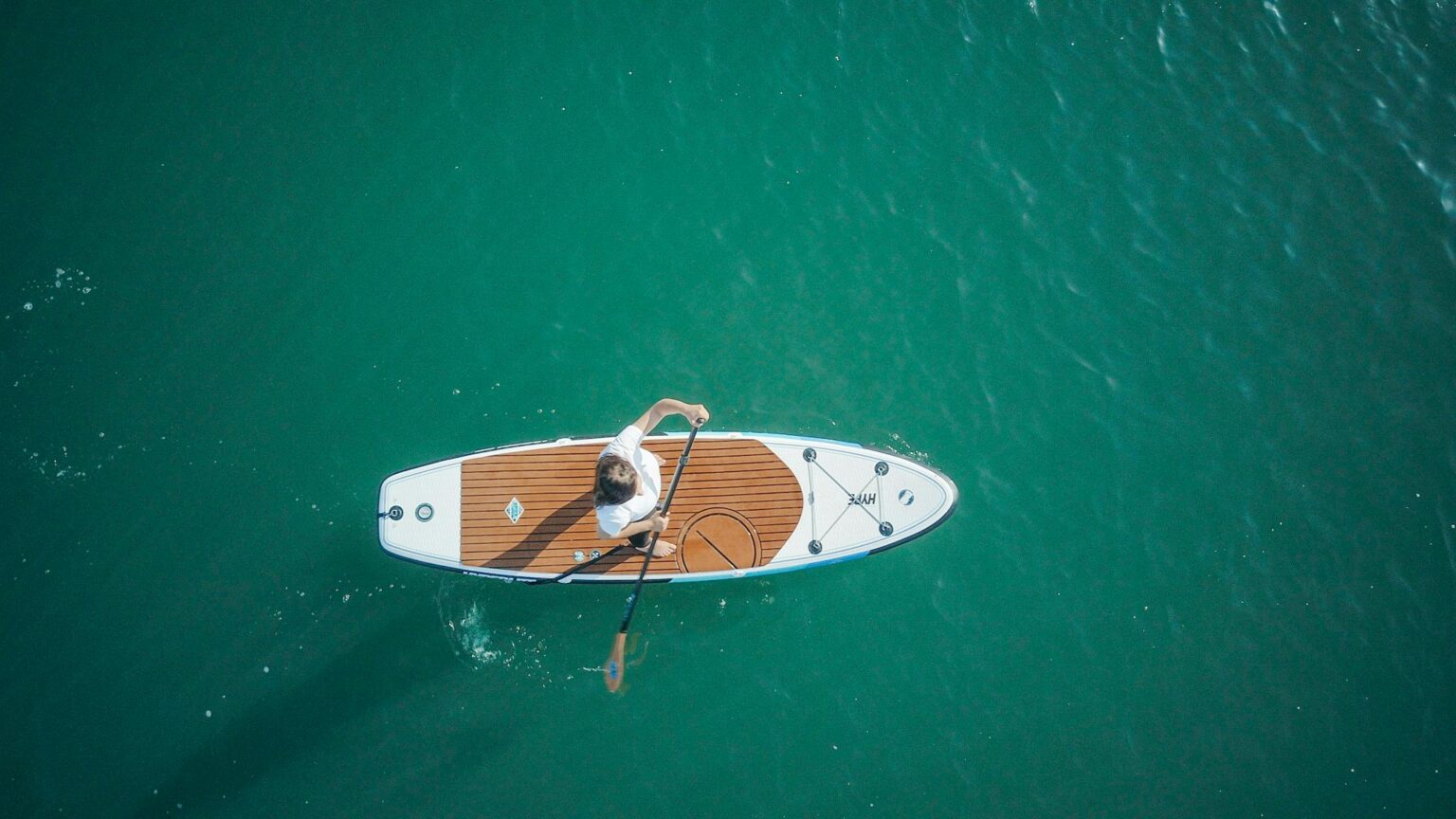
All-Around Boards – The Everyday Favorites
If you’re only buying one board, an all-around SUP is the way to go.
They’re the most versatile — balancing stability, glide, and maneuverability.
Length: About 10–11 feet.
Width: 32–34” for great stability.
Shape: Rounded nose, moderate rocker, and a wide deck pad.
Best for: Beginners, families, casual cruising, or light surf days.
Inflatable or Hard? Inflatables dominate this category for convenience and durability.
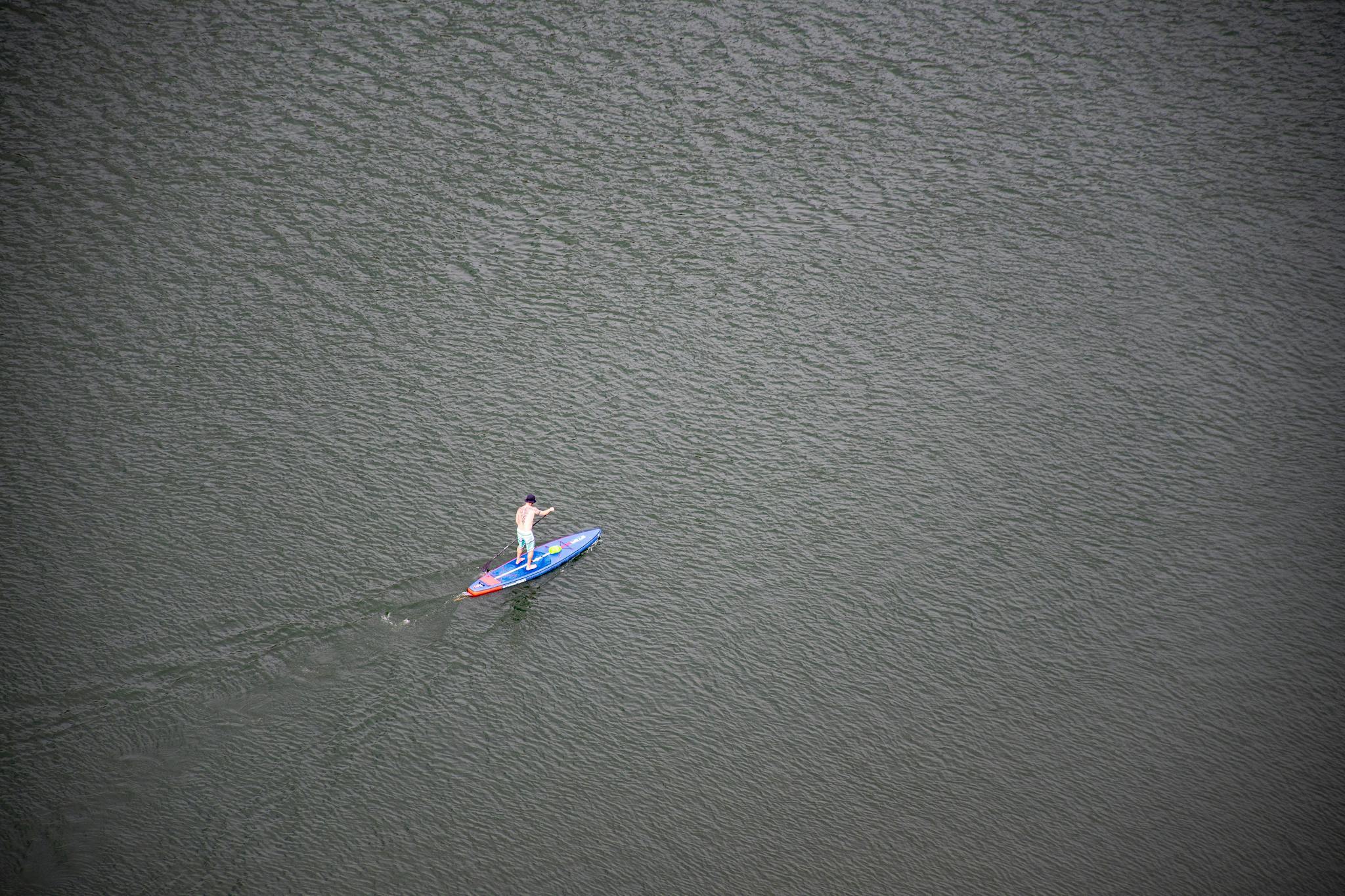
Touring Boards – Long Distance Cruisers
Touring boards are the SUVs of paddle boarding — designed for covering distance comfortably, with room for gear.
Length: Usually 11’ to 13’.
Width: Wider than race boards (around 30–32”), for stability and storage space.
Shape: Still pointed, but with a softer outline and mild rocker for versatility.
Ideal for: Long paddles on lakes, bays, and calm ocean water.
Inflatable or Hard? Both are popular — inflatables pack small for travel, while hard boards track slightly better on long runs.
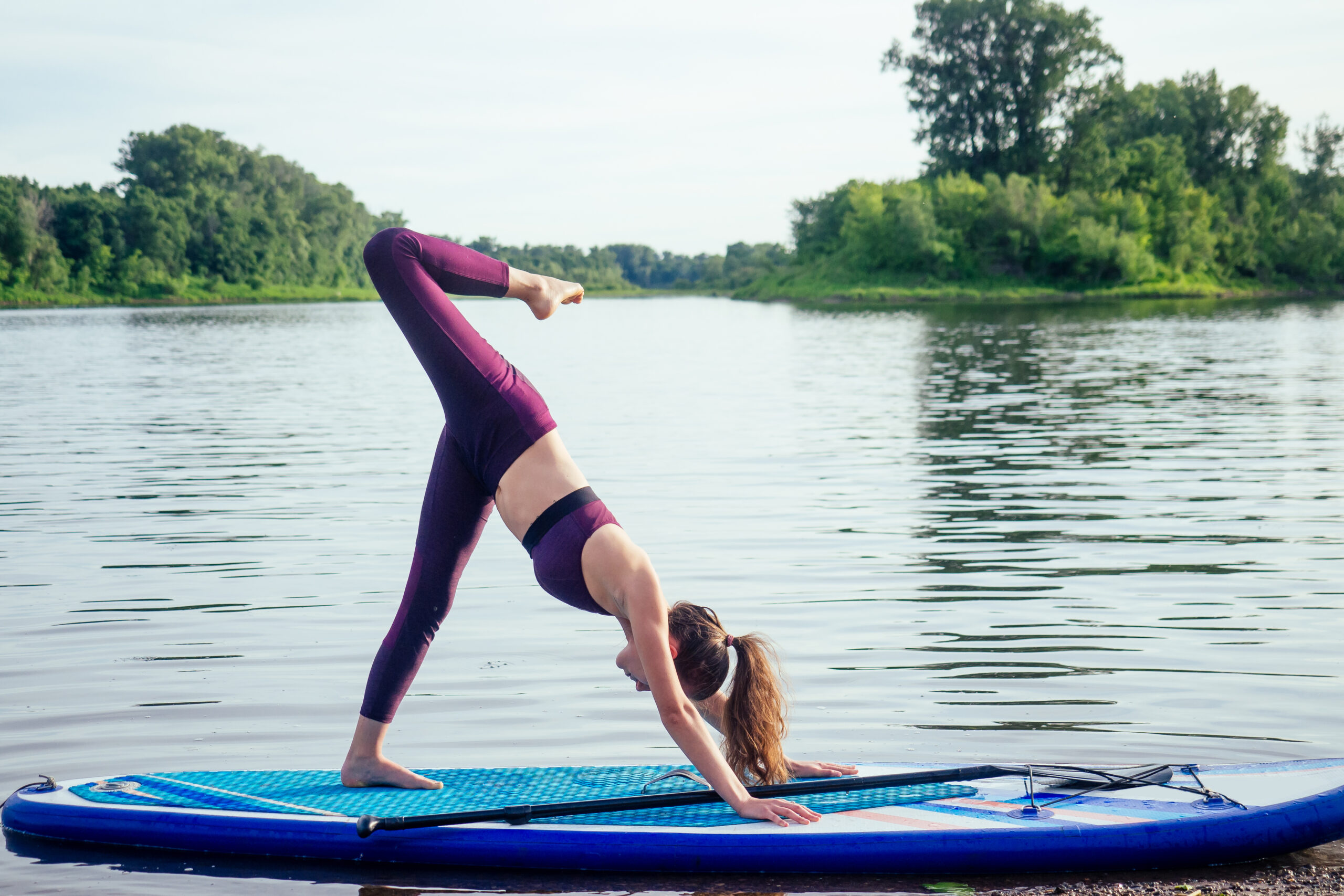
Yoga & Fitness Boards – Stable Platforms for Balance
These boards are extra wide and stable, built to be your floating yoga mat.
Length: 10–11’.
Width: Often 34–36” for max stability.
Shape: Rounded outline and soft deck pad for comfort.
Inflatable or Hard? Almost always inflatable for portability and cushioning.
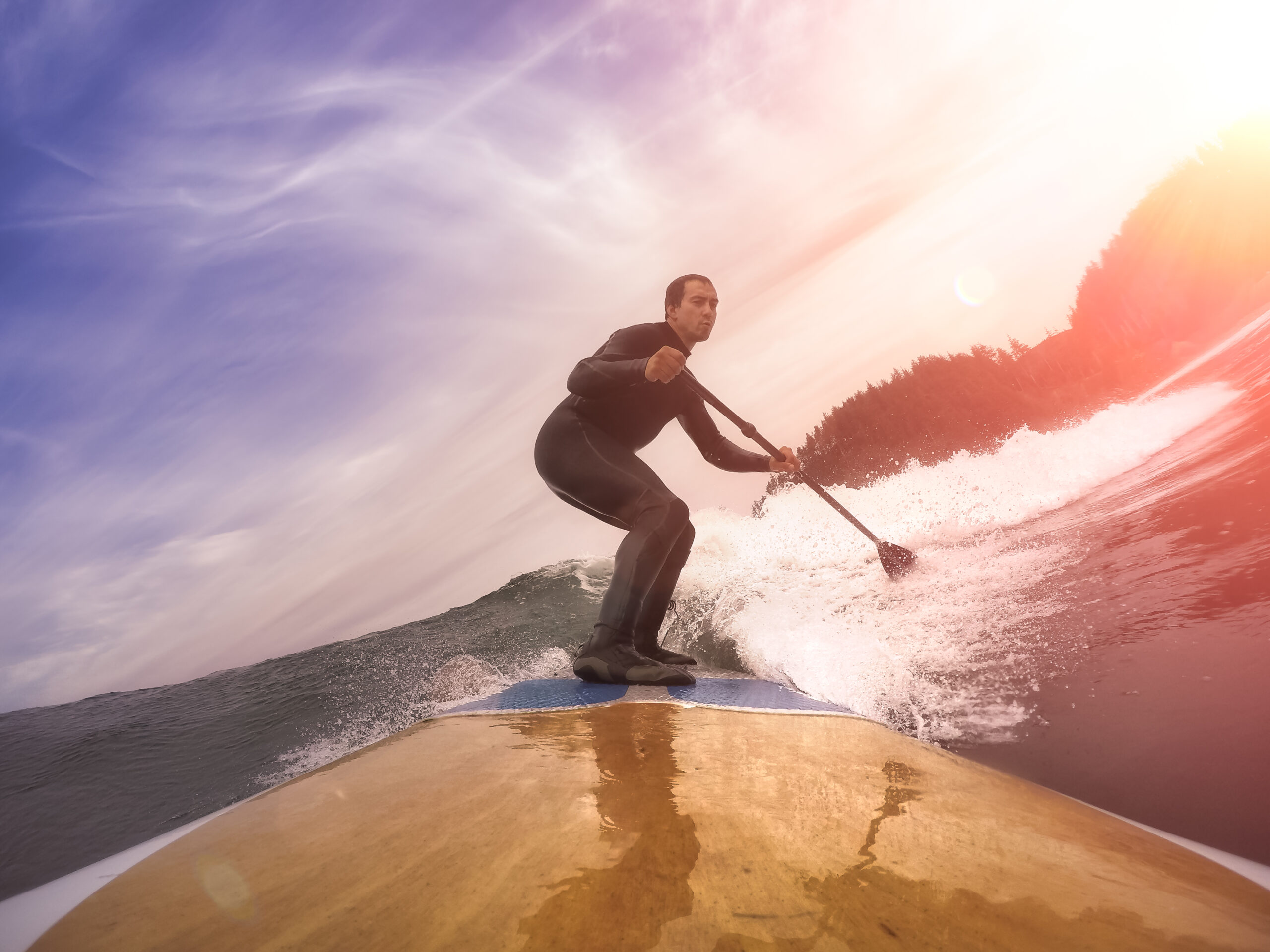
Surf SUPs – Short, Agile, and Built for Waves
Surf SUPs are the shortboards of the paddle world.
They’re usually under 10 feet long, with a narrow, curved outline and rocker (upturned nose and tail).
That shape lets them turn quickly and carve across waves without catching an edge.
Material: Usually hard boards (epoxy/fiberglass) because stiffness gives better control and quick response in surf.
Who they’re for: Paddlers who want to catch and ride waves rather than cruise flat water.
Trade-off: Great maneuverability, but less stability and slower on calm water.
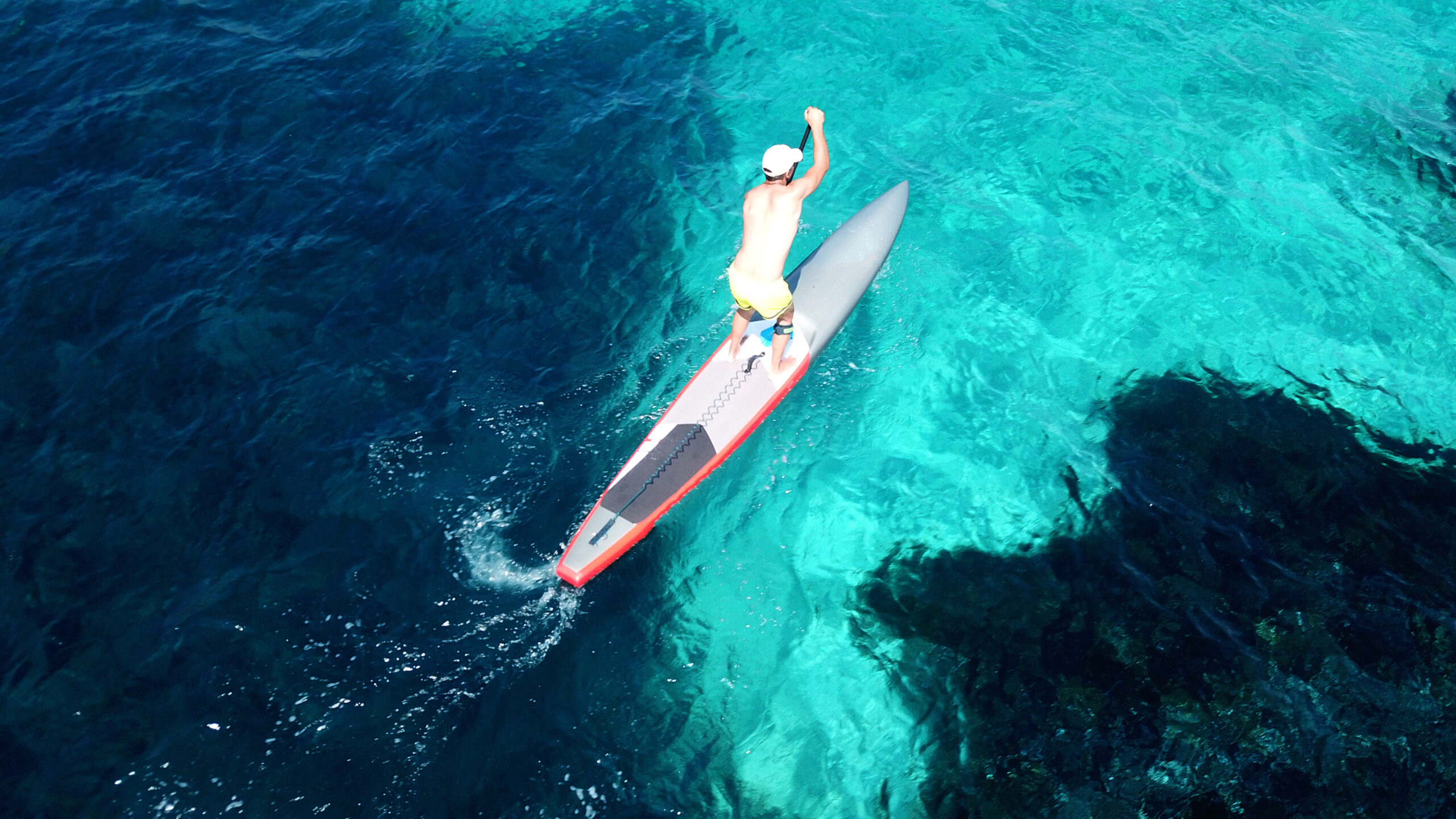
Race Boards – Long, Narrow, and Built for Speed
Race SUPs are all about efficiency — making sure every paddle stroke drives the board forward instead of turning it.
Length: Typically 12’6” to 14’.
Width: Narrow (often under 26–28”), to reduce drag.
Shape: Pointed nose (“displacement hull”) that slices through water.
Performance: Tracks straight, glides far, and accelerates fast — but they’re less stable and harder for beginners.
Material: Almost always hard boards, since inflatables can flex and lose speed.
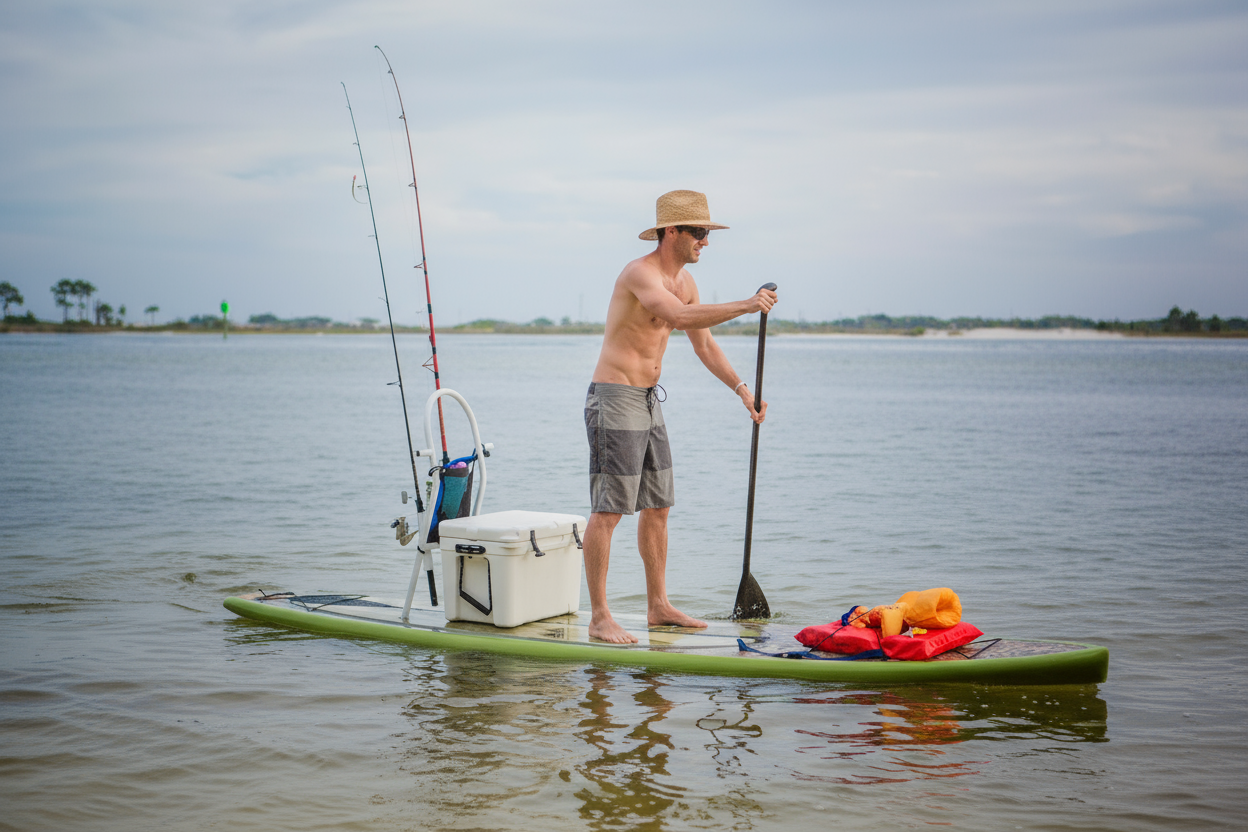
Specialty Boards – Fishing, Family, and More
Fishing SUPs: Wider decks (35–38”), multiple tie-downs, and mounts for gear or seats.
Multi-person or Family Boards: Extra-long (up to 15’), designed to carry 2–3 people or pets.
Kids’ Boards: Shorter (8–9’) and lighter for smaller paddlers.